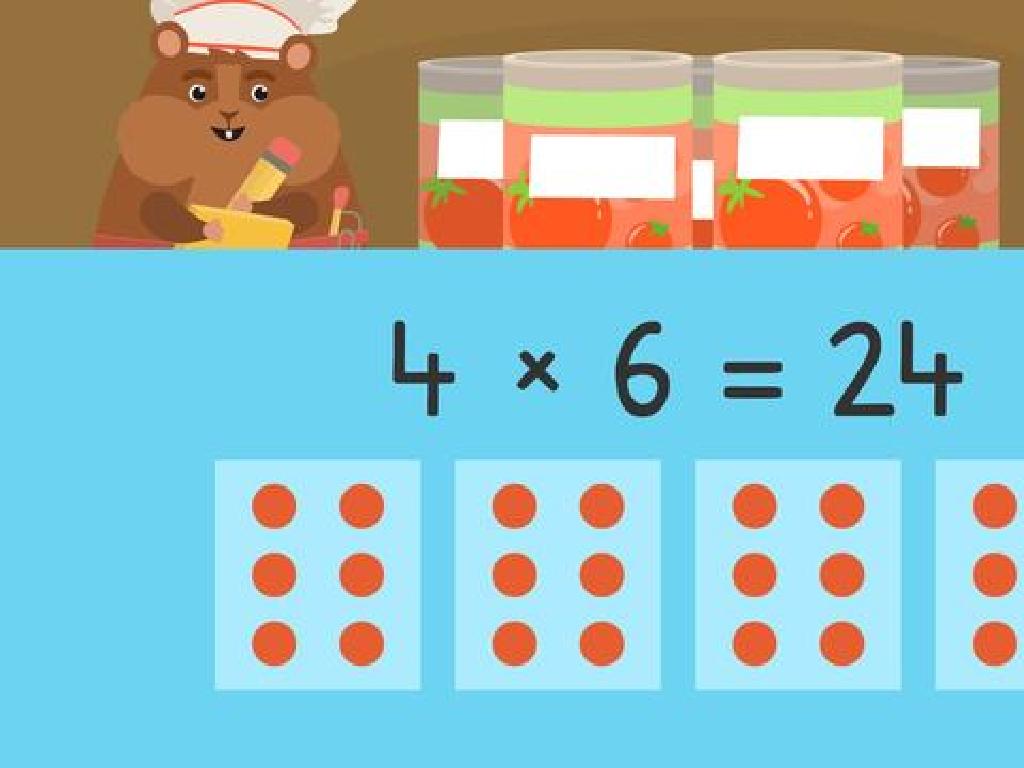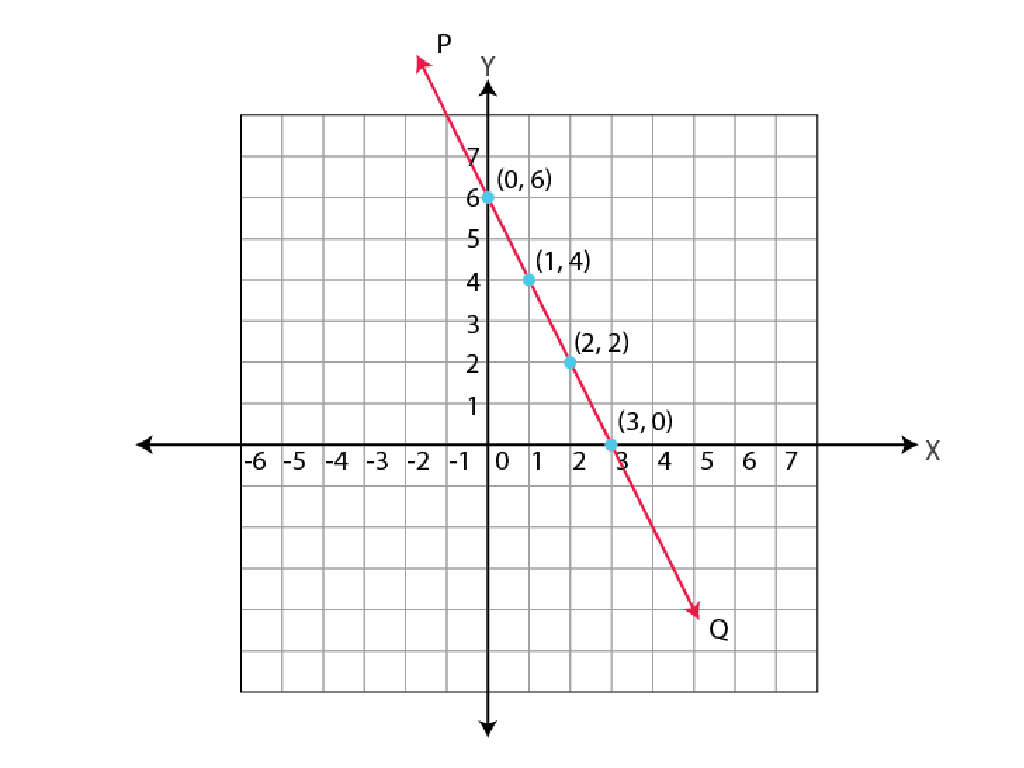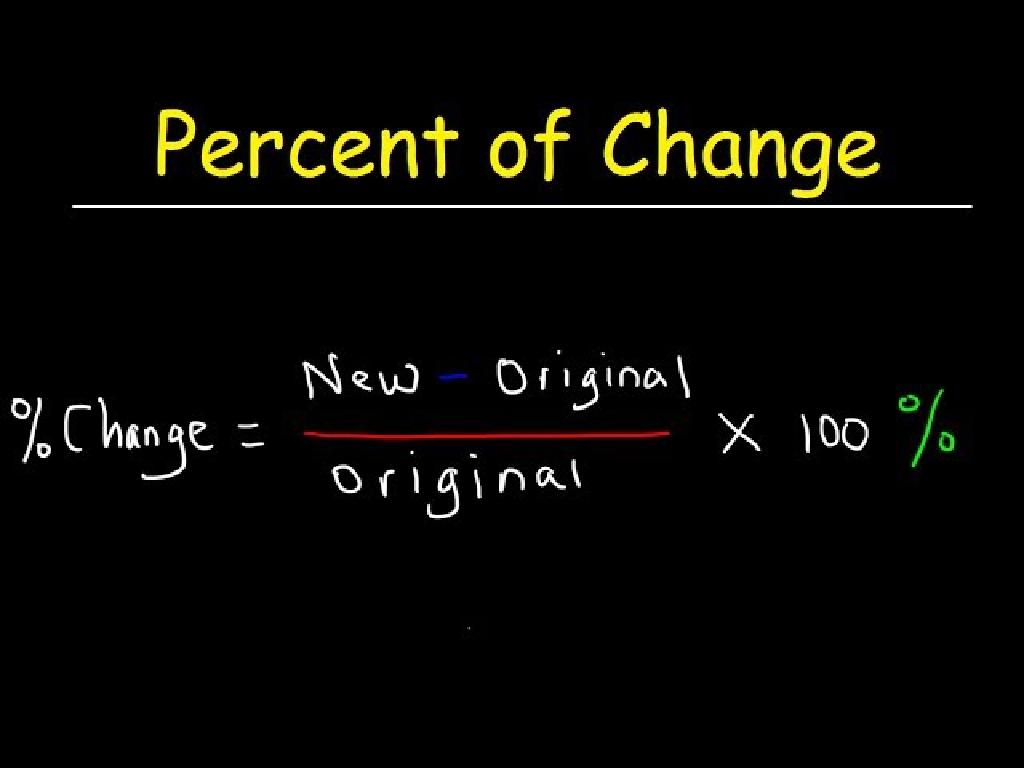Compare Illustrations Of Literary And Historical Subjects
Subject: Language arts
Grade: Eighth grade
Topic: Visual Elements
Please LOG IN to download the presentation. Access is available to registered users only.
View More Content
Comparing Illustrations in Literature & History
– Understanding visual elements
– Visual elements include color, line, shape, texture, space, and form.
– Enhancing comprehension with illustrations
– Illustrations can provide insights into the time period, setting, and character emotions.
– Comparing literary vs. historical visuals
– Observe differences in style, focus, and perspective between literary and historical artwork.
– Techniques for effective comparison
– Use Venn diagrams or T-charts to juxtapose elements from different illustrations.
|
This slide introduces the concept of visual elements and their importance in both literature and history. Students will learn how illustrations can deepen their understanding of a text by providing context and emotional depth. The focus is on comparing and contrasting illustrations from literary works with those depicting historical events. Encourage students to consider how the artist’s choices in visual elements can influence the viewer’s interpretation. Provide examples of illustrations from classic literature and historical documents, and guide students in identifying the techniques used to convey themes and messages. This will help students develop analytical skills in interpreting visual media.
Exploring Visual Elements in Storytelling
– Define Visual Elements
– Basic components like line, shape, color, texture, and space.
– Visual Elements across mediums
– Compare visuals in books, films, paintings, and digital media.
– Visuals enhance narratives
– Visuals convey emotions and tone, adding depth to stories.
– Analyzing Visual Elements
|
Visual elements are the foundational aspects of any visual medium, including line, shape, color, texture, and space. They are crucial in storytelling across various mediums such as literature, cinema, art, and digital media. By comparing illustrations in different mediums, students can understand how visual elements contribute to the narrative, set the tone, and evoke emotional responses. Encourage students to analyze how these elements are used in their favorite stories or historical depictions to enhance their understanding of the material. This slide will prompt students to think critically about the role of visual elements in storytelling and how they influence our interpretation of literary and historical subjects.
Literary vs. Historical Illustrations
– Distinct traits of literary illustrations
– Focus on mood, theme, and character depiction
– Historical illustrations’ unique aspects
– Emphasize accuracy, period details, and factual representation
– Context’s role in illustration style
– Style and purpose shift based on the setting and message
– Deciphering the artist’s intention
– Understanding symbolism and message in artwork
|
This slide aims to highlight the differences between literary and historical illustrations, emphasizing how the context of the work influences the style and purpose of the illustrations. Literary illustrations often focus on enhancing the narrative’s mood, themes, and characters, while historical illustrations strive for accuracy and factual representation of a specific period. Students should consider how the illustrator’s choices in color, composition, and content contribute to the overall message and how these elements differ based on whether the illustration is for a literary or historical context. Encourage students to think critically about what the artist might be trying to convey and how the illustrations complement or contrast with the text they accompany.
Analyzing Literary Illustrations
– Identify key elements in illustrations
– Look for characters, settings, and actions depicted visually
– Understand symbolism and themes
– Symbols may represent larger ideas; themes are the underlying messages
– Connect illustration to the text
– How does the image reflect or enhance the story or message?
|
This slide aims to guide students through the process of analyzing illustrations in literary works. Start by identifying the key visual elements such as characters, setting, and actions. Discuss how these elements contribute to the overall understanding of the story. Delve into the use of symbolism within the illustrations, explaining how certain images can represent broader ideas or themes. Encourage students to think critically about how the illustration complements or provides insight into the text. This analysis will enhance their appreciation of the interplay between visual and written storytelling and help them to interpret the deeper meanings conveyed through illustrations.
Analyzing Historical Illustrations
– Identify key elements in illustrations
– Look for symbols, characters, and settings that stand out
– Assess accuracy and perspective
– Consider the illustrator’s viewpoint and how it shapes the depiction
– Connect to historical context
– Relate the image to the time period and events it represents
– Evaluate the illustrator’s interpretation
– Think about how the illustrator’s choices convey a particular message or story
|
This slide aims to guide students through the process of analyzing historical illustrations. Start by identifying the most striking elements in the illustration, such as symbols, characters, and settings. Discuss the importance of accuracy in historical illustrations and how the illustrator’s perspective can influence the portrayal of events. Encourage students to make connections between the illustration and the historical context it represents, considering the time period and significant events. Finally, have students evaluate the illustrator’s interpretation and the message or story being conveyed through the artwork. This analysis will help students understand the role of visual elements in shaping our perception of history.
Comparing Literary & Historical Illustrations
– Similarities in illustrations
– Both may depict narratives or themes
– Differences in purpose & style
– Literary aims to entertain, historical aims to inform. Styles may vary from abstract to realistic.
– Analyzing content variations
– Content in literary may be fictional, historical is factual
– Class exercise: Spot the differences
– Review provided examples to identify common traits and distinct elements
|
This slide aims to help students understand how to compare and contrast visual elements in literary and historical illustrations. Start by discussing the similarities, such as their ability to convey stories or themes visually. Then, move on to the differences, emphasizing that the purpose of literary illustrations is often to entertain and evoke emotion, while historical illustrations serve to record and inform about real events. Discuss how these purposes influence the style and content of the illustrations. For the class exercise, provide students with examples of both types of illustrations and guide them to identify similarities in the narrative or thematic elements and differences in purpose, style, and content. Encourage critical thinking and discussion about why these elements are important in understanding the illustrations’ impact and meaning.
Visualizing ‘The Great Gatsby’
– Explore ‘The Great Gatsby’ illustrations
– Look at different artists’ interpretations of the book
– Discuss representation of novel’s themes
– How do images capture the essence of wealth, dreams, or decay?
– Group activity: Create scene illustrations
– Students work in groups to draw a novel scene
– Reflect on the illustration process
– Consider what was learned by illustrating
|
This slide introduces a case study on ‘The Great Gatsby’, focusing on how visual elements in illustrations can convey the novel’s complex themes such as the American Dream, social stratification, and the pursuit of happiness. Students will compare various artists’ illustrations and discuss how these visuals represent the key themes. For the group activity, students will be divided into small groups and tasked with creating their own illustrations for a specific scene from the novel. This activity encourages creativity, understanding of thematic elements, and teamwork. As a follow-up, students will reflect on their creative process and discuss how their illustrations relate to the themes of the novel. Provide guidance on artistic expression and facilitate discussions that deepen their comprehension of the literary work.
Visual Elements: The American Revolution
– Explore Revolution illustrations
– Look at different pictures of the American Revolution.
– Discuss perspective in art
– How do artists show various sides of the story?
– Group activity on historical accuracy
– Check if the art shows what really happened.
– Reflect on illustration impact
– Think about how these images affect our view of history.
|
This slide introduces students to the concept of visual elements through the case study of the American Revolution. Students will explore and analyze various illustrations, discussing how each artist’s perspective influences the depiction of the event. The group activity will involve analyzing the historical accuracy of these illustrations, encouraging students to consider the reliability of visual sources. This activity will help students understand that illustrations can both reflect and shape our understanding of historical events. Provide guidance on how to evaluate historical accuracy and remind students to consider the context in which the artwork was created. Possible activities could include comparing illustrations to historical texts, debating the intent behind different artistic choices, or creating their own historically accurate artwork.
Class Activity: Create and Compare Illustrations
– Form small groups for activity
– Create literary & historical illustrations
– Choose a theme, illustrate a scene from a book and a historical event
– Present and compare your artwork
– Discuss the visual elements
– Focus on color, shape, line, texture in your discussion
|
In this engaging class activity, students will work in small groups to create illustrations of both a literary scene and a historical event, based on a common theme. This will help them understand the use of visual elements in different contexts. After creating their illustrations, each group will present their work to the class and discuss the visual elements such as color, shape, line, and texture, and how they contribute to the overall understanding of the subject. Possible themes include ‘Conflict’, ‘Triumph’, or ‘Discovery’. Encourage creativity and critical thinking as students compare how these elements work to convey meaning in literature versus historical depiction.
Conclusion: The Power of Illustrations
– Recap of illustration comparison
– Discuss visual storytelling insights
– How do images help convey a story or theme?
– Reflect on today’s learning
– Consider how illustrations enhance or alter our perception of texts.
– Homework: Essay on illustration significance
– Importance of visuals in literature and history comprehension.
|
As we wrap up today’s lesson, it’s important to revisit the key points of comparing illustrations in literary and historical contexts. Encourage an open discussion to let students express what they’ve learned about visual storytelling. For homework, students should write a short essay reflecting on how illustrations aid in understanding complex literature and historical events. This exercise will help solidify their understanding of the material and allow them to express their thoughts on the subject. The essay should be a personal reflection that includes specific examples from the lesson, demonstrating their grasp of the topic.






